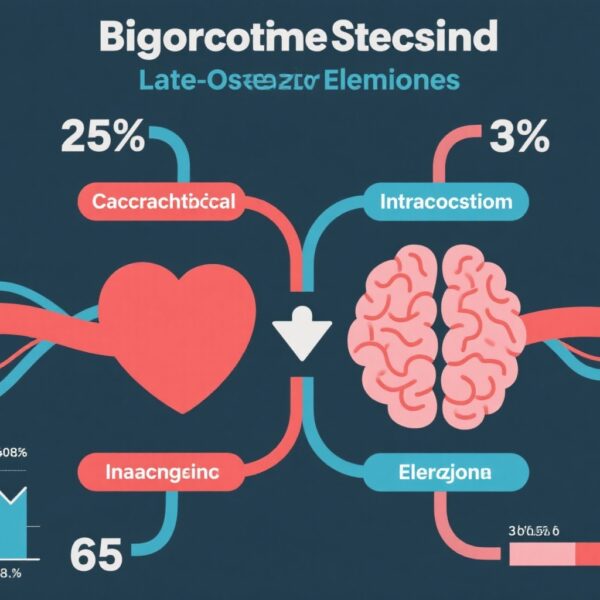Highlight
• A rapidly evolving influenza A(H3N2) subclade (referred to as subclade K) has been reported in the southern hemisphere and is rising in the UK, with mutations that differ from the 2025 vaccine strain.
• Early international reports suggest increased case counts concentrated in children and young adults; severity signals and geographic spread to the northern hemisphere remain uncertain.
• Even with antigenic mismatch, vaccination reduces risk of severe disease; clinicians should prioritize vaccination, early testing, and guideline-based antiviral treatment for high-risk patients.
Background and Clinical Context
Seasonal influenza A(H3N2) viruses are well known for frequent antigenic drift in hemagglutinin (HA), which can reduce population immunity and vaccine effectiveness. The 2025–26 influenza season is being watched closely because genomic surveillance from the 2025 southern hemisphere season and early northern hemisphere reports describe an H3N2 variant with multiple HA mutations.
Influenza epidemics disproportionately affect young children, older adults, pregnant people, and persons with chronic medical conditions. Antigenic drift that yields a virus poorly matched to the seasonal vaccine can increase attack rates and hospitalizations, as seen in past mismatched seasons. Timely surveillance, vaccination, and appropriate clinical management are central to mitigating impact.
Study Design and Surveillance Reports
The primary data prompting concern come from two recent publications and national surveillance summaries:
- BMJ report summarizing UK clinical and laboratory surveillance that documented rising influenza activity in autumn 2025, driven mainly by an H3N2 variant and concentrated among school-age children and young adults (Iacobucci G., BMJ 2025).
- Genomic and epidemiological analysis published in the Journal of the Association of Medical Microbiology and Infectious Disease Canada (JAMMI) describing emergence of H3N2 variants during the southern hemisphere 2025 season; a dominant variant was designated subclade K by the authors and found to be antigenically distinct from the 2025 vaccine strain.
- National surveillance snapshots: Japan declared an influenza epidemic in October 2025 (reported in Nature), and localized increases have been reported by regional public health entities. U.S. national summary reporting has lagged owing to administrative disruptions, but state- and local-level data show early activity in some southern jurisdictions.
These reports are observational surveillance studies combining virology, genomic sequencing, and routine epidemiologic case counts rather than controlled clinical trials. The primary endpoints are prevalence, genetic characterization (mutations in HA), age distribution of cases, and relative proportional increase in H3N2 detections.
Key Findings and Interpretation
1) Viral evolution and antigenic drift
Genomic analyses described acquisition of several amino acid substitutions in HA over the northern summer and southern winter, leading to a virus antigenically different from the A(H3N2) component included in the 2025 vaccine. The BMJ report highlighted seven new HA mutations noted over the summer that, in experts’ view, conferred a meaningful antigenic shift relative to the vaccine strain.
2) Epidemiology and age distribution
Reports from the UK noted a disproportionate increase in influenza cases among school-aged children and young adults. This pattern is consistent with reduced population immunity in younger cohorts when a drifting H3N2 strain spreads; children often fuel community transmission.
3) Clinical severity signals
At present, publicly available reports have not established a definitive increase in disease severity (hospitalizations or deaths) attributable uniquely to subclade K compared with prior H3N2 seasons. Early signals prompting concern are higher case counts and apparent vaccine mismatch rather than compelling evidence of enhanced virulence.
4) Geographic spread and timing
Data from the southern hemisphere typically inform northern hemisphere preparedness. The subclade K variant that dominated parts of the 2025 southern hemisphere season is projected by authors and surveillance programs to have the potential to predominate in the 2025–26 northern season. However, the pace and extent of spread are subject to travel patterns, local immunity, and stochastic dynamics.
Implications for Vaccine Effectiveness and Policy
Antigenic mismatch can reduce vaccine effectiveness, especially against H3N2, where efficacy is already lower than for other subtypes in many seasons. That said, observational data and randomized trials across many seasons show that even a mismatched vaccine typically reduces the risk of severe outcomes—hospitalization and death—more than it prevents all symptomatic infections. Public health authorities and clinicians should therefore continue to recommend vaccination broadly.
Expert Commentary
Antonio Ho, MD, summarized the virologic concern: “The current circulating influenza A (H3N2) virus acquired seven new mutations over the summer, which means the virus is quite different to the A (H3N2) strain included in this year’s vaccine.” This highlights the practical challenge: vaccine strain selection is based on best-available surveillance months before northern season onset, and rapid drift can reduce antigenic match.
Lori Handy, MD, MSCE, emphasized the protective role of vaccination and advised urgent uptake: “Even a mismatched vaccine has protective benefits … Many people may still get sick, but vaccination will keep them out of the emergency department and hospital.” Her comment echoes accumulated evidence that vaccines retain capacity to blunt severe disease even when infection prevention is imperfect.
Independent specialists caution that surveillance gaps complicate risk assessment. U.S. national reporting delays have left clinicians and health systems reliant on local surveillance, sentinel networks, and international trends to model risk.
Clinical Recommendations for Practicing Clinicians
1) Vaccination
– Continue to strongly recommend and offer seasonal influenza vaccination to all eligible patients as soon as feasible, emphasizing protection against severe disease even in the face of potential mismatch.
– Prioritize vaccination for high-risk groups: children under 5 (especially under 2), adults ≥65 years, pregnant people, residents of long-term care facilities, and persons with chronic medical conditions.
2) Testing and diagnosis
– Use influenza testing (preferably PCR where available) to guide clinical decision-making for patients with acute respiratory illness during influenza season, particularly in high-risk individuals or when antiviral therapy is being considered.
3) Antiviral therapy
– Initiate neuraminidase inhibitors (oseltamivir) or other guideline-recommended antivirals promptly for hospitalized patients, patients with severe or progressive illness, and high-risk outpatients, regardless of vaccination status, in keeping with national guidance (e.g., CDC antiviral recommendations).
– Early treatment (within 48 hours of symptom onset) provides the most benefit but treatment should still be considered beyond 48 hours for hospitalized or high-risk patients.
4) Infection control and outpatient management
– Reinforce standard respiratory precautions in healthcare settings, encourage sick patients to avoid contact with vulnerable persons, and support workplace and school policies that reduce transmission (sick leave, testing guidance, hygiene measures).
Public Health and Surveillance Priorities
1) Enhance molecular surveillance
– Expand sequencing capacity and timely sharing of genetic and antigenic data to detect emerging variants and inform vaccine strain selection and public messaging.
2) Improve timeliness and transparency of reporting
– Where national reporting is delayed or disrupted, strengthen state and local reporting systems and partnerships with academic and private-sector laboratories to deliver actionable intelligence to clinicians and health systems.
3) Prepare health system surge capacity
– Hospitals and primary care networks should review surge plans, ensure antiviral stockpiles and supply chains, and coordinate with public health authorities to prioritize resources for vulnerable populations.
Limitations and Areas of Uncertainty
• Surveillance bias: early increases in detection may reflect testing practices, sentinel site activity, or localized outbreaks rather than broad national trends.
• Severity assessment: firm conclusions about virulence or increased clinical severity require systematic hospitalization and mortality data adjusted for age and comorbidity; such analyses are pending.
• Vaccine composition and effectiveness estimates: population-level vaccine effectiveness studies are needed once seasonal circulation is established; modeling based on antigenic characterization provides early but indirect clues.
Conclusion
Emergence of an H3N2 subclade with multiple HA mutations (subclade K) during 2025 southern hemisphere circulation and early UK increases raise a credible concern that the 2025–26 northern hemisphere influenza season could be driven by a virus with imperfect vaccine match. However, existing evidence does not yet demonstrate substantially increased virulence. Clinicians should continue to promote vaccination, use testing and early antiviral treatment for high-risk patients, and stay informed through state, national, and international surveillance updates. Public health authorities should prioritize sequencing, rapid data sharing, and preparation for increased seasonal activity.
Selected References
- Iacobucci G. Flu in numbers: NHS faces one of worst winters ever, officials warn, amid concern over mutated strain. BMJ. 2025 Nov 12;391:r2391. doi: 10.1136/bmj.r2391. PMID: 41224474.
- Emergence of seasonal influenza A(H3N2) variants with immune escape potential warrants enhanced molecular and epidemiological surveillance for the 2025–2026 season. Journal of the Association of Medical Microbiology and Infectious Disease Canada. 2025. https://utppublishing.com/doi/10.3138/jammi-2025-0025
- Centers for Disease Control and Prevention. Influenza (Flu) — Antiviral Drugs: Information for Health Professionals. https://www.cdc.gov/flu/professionals/antivirals/index.htm. Accessed 2025.
- World Health Organization. Global influenza surveillance and response system (GISRS) and FluNet. https://www.who.int/teams/global-influenza-programme. Accessed 2025.
- Nature News. Japan declares influenza epidemic as cases rise. Nature. October 2025. (news report summarizing national surveillance; consult national reports for primary data).



